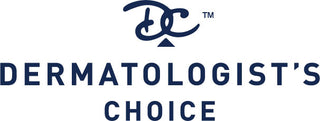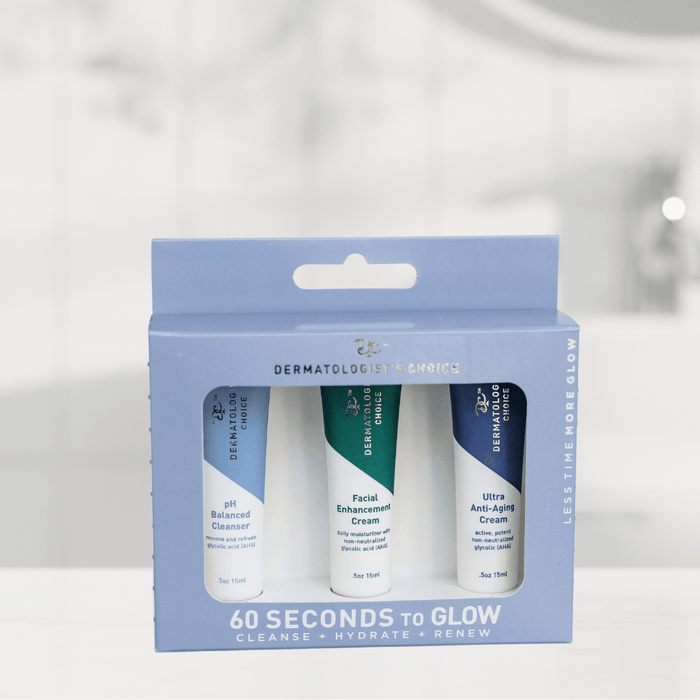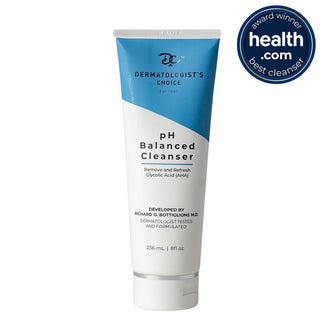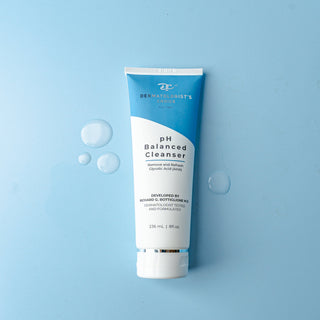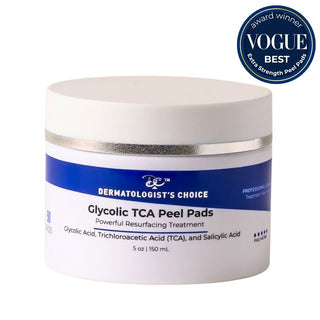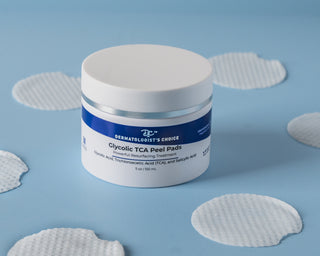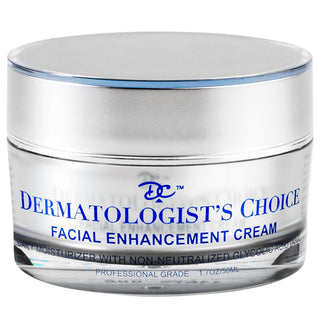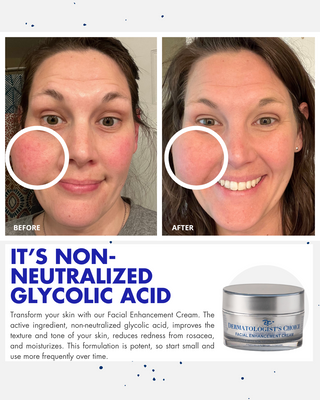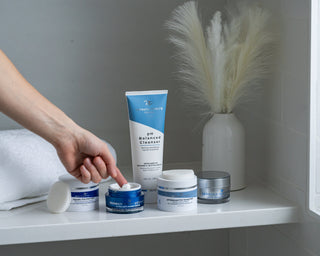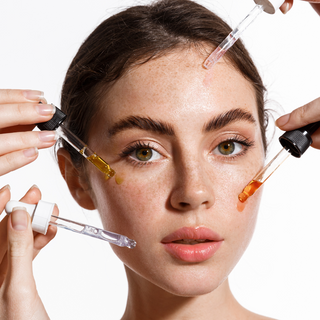
As the spotlight on skincare intensifies, ingredients like Glycolic Acid and Vitamin C have taken center stage. These acclaimed skincare stars are revered for their skin-brightening capabilities, but the question remains: which of these two powerhouses is more effective? This blog post seeks to unveil the undisputed champion for skin brightening by delving into the distinct characteristics of Glycolic Acid and Vitamin C, bolstered by clinical studies and dermatologist quotes.
MEET THE EXPERT

The Skincare Gold Standard: Glycolic Acid
A well trusted and clinically tested ingredient, Glycolic Acid is a type of alpha-hydroxy acid (AHA) that hails from natural and clean sugarcane. This water-soluble acid has an innate ability to exfoliate the skin. Picture it as an the activation you need to break up the bonds so the dead topical layer of skin which includes dry, dull, and damaged pigmentation skin can gently flake away - no downtime or pain. This process of exfoliation unveils the brighter, youthful skin cells that were hiding beneath the dull layer. But that's not all; Glycolic Acid goes a step further, stimulating collagen production to improve skin texture. Its all-round capabilities have earned it a special place in the world of anti-aging skincare.
Learn more about the non-neutralized Glycolic Acid and its profound effects on the skin here.
What is Vitamin C Skincare?
Vitamin C, also known as ascorbic acid, is a potent antioxidant that helps to protect the skin from free radical damage. It is also involved in the production of collagen, which helps to keep the skin looking firm and youthful. Vitamin C has been shown to help brighten the skin by inhibiting the production of melanin, which is responsible for dark spots and hyperpigmentation.

The Clash of Titans: Clinical Studies and Dermatologist Quotes
The skincare industry's spotlight often flits between Glycolic Acid and Vitamin C, both known for their brightening properties. However, numerous clinical studies and dermatologist testimonials suggest that Glycolic Acid might be the more effective skin-brightening ingredient.
A study published in the Journal of Cosmetic Dermatology presented a comparative analysis between a Glycolic Acid peel and a Vitamin C peel. The results tipped the scales in favor of Glycolic Acid, which showed a more significant reduction in hyperpigmentation.
Dermatologist Dr. Heather Woolery-Lloyd, in an interview with Allure, lauded Glycolic Acid as a potent skin-brightener. She stated, "Glycolic Acid is a great exfoliator that helps brighten the skin and improve skin texture. It also stimulates collagen production, which can help reduce the appearance of fine lines and wrinkles."
SHOP our range of Glycolic Acid skincare products.
The Verdict: Glycolic Acid Reigns Supreme
The evidences are stacked, and the skincare verdict is clear: while both Glycolic Acid and Vitamin C hold potential for skin brightening, Glycolic Acid takes the crown for its effectiveness. With its ability to exfoliate, stimulate collagen production, and reduce hyperpigmentation, it's no wonder Glycolic Acid is a star ingredient in anti-aging skincare.
If brighter, more youthful skin is your skincare goal, it may be time to welcome a Glycolic Acid product into your skincare routine.
Kickstart your skin-brightening journey with the 60 Seconds to Glow Skincare Essential Starter Travel Set.
Disclaimer: The skincare articles on Dermatologist’s Choice are intended for educational purposes, providing insights into specific ingredients and skincare topics. Our content is designed to be informative, not to serve as medical advice. Any mention of patient experiences is purely for informational purposes and should not be interpreted as a treatment recommendation. Additionally, any Dermatologist’s Choice products referenced in these articles are formulated for cosmetic use only and are not intended to replace professional medical advice or pharmaceutical treatments. Always consult a physician for personalized skincare recommendations.
